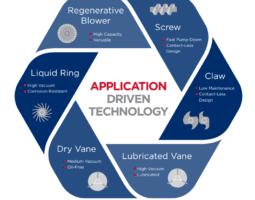Compressed air is a vital component in various industrial processes, powering equipment and tools across diverse sectors. However, the quality of compressed air often goes unnoticed despite its critical role. Contaminants present in compressed air can lead to equipment damage, compromised product quality, and increased maintenance costs. In this blog post, we’ll delve into the different types of contaminants that can affect industrial air compressors and explore strategies to ensure the quality and reliability of compressed air systems.
Types of Contaminants
-
Particulate Contaminants:
Particulate contaminants consist of solid particles suspended in the compressed air. These particles can include dust, dirt, rust, and debris. When these contaminants enter the air stream, they can cause abrasion, clogging, and wear in downstream equipment. Regular maintenance and proper filtration are essential to prevent particulate contamination from impacting equipment performance.
-
Moisture and Water Vapor:
Moisture is a common issue in compressed air systems, as ambient air contains water vapor that can condense as the air is compressed. Excessive moisture can lead to corrosion, equipment damage, and compromised product quality. To address this, air dryers and separators are used to remove moisture from the air, ensuring dry and clean compressed air.
-
Oil and Oil Vapor:
Oil contaminants can enter compressed air systems from various sources, including lubricants and improper maintenance. Oil contamination can lead to malfunctioning pneumatic equipment, clogged filters, and reduced product quality. Filtration systems and oil removal techniques are crucial for maintaining oil-free compressed air, especially in sensitive applications.
-
Microbiological Contaminants:
Microbiological contaminants, including bacteria, viruses, and fungi, can be present in compressed air systems. These contaminants pose a risk to industries like pharmaceuticals and food production, where sterile conditions are paramount. Sterile filters and proper maintenance practices are essential to prevent the proliferation of microbiological contaminants.
-
Chemical Contaminants:
Chemical contaminants, such as volatile organic compounds (VOCs), can find their way into compressed air systems from external sources. These contaminants can compromise product quality, employee health, and environmental compliance. Adequate ventilation and source control are crucial in managing chemical contamination risks.
Impact of Contaminants:
The consequences of ignoring contaminants in compressed air systems can be severe. Equipment lifespan can be reduced, leading to increased maintenance costs and downtime. Moreover, compromised product quality can harm a company’s reputation and bottom line. Addressing contamination issues proactively is essential to avoid these negative outcomes.
Preventing and Managing Contaminants:
Implementing a comprehensive approach to contamination control is vital. Regular maintenance and inspection routines should be established to identify and address potential contamination sources. Selecting and installing appropriate filters and dryers based on the specific contaminants present is key to effective control. Additionally, proper drainage systems and seals should be in place to prevent moisture and oil buildup.
Compliance and Standards:
Adhering to industry standards, such as ISO 8573, is critical to ensuring compressed air quality. These standards provide guidelines for contamination levels and specify recommended filtration and drying practices. Meeting these standards not only ensures reliable operations but also demonstrates a commitment to quality and safety.
Case Studies: Real-Life Examples:
In one case, a manufacturing facility experienced frequent equipment breakdowns due to particulate contamination. By implementing regular maintenance, filter upgrades, and effective drainage systems, they significantly reduced downtime and maintenance costs. Another example involves a food processing plant that prevented microbiological contamination by installing sterile filters and maintaining strict hygiene practices.
Contaminants in compressed air systems can have far-reaching consequences on equipment, product quality, and operational efficiency. By understanding the various types of contaminants and implementing proactive strategies for prevention and control, industrial facilities can ensure the reliability and quality of their compressed air. Regular maintenance, proper filtration, and adherence to industry standards are the pillars of effective contamination management, safeguarding both equipment and business reputation.
To ensure your system is contaminant-free, or to have your equipment serviced to remove and prevent contaminants, give us a call at (816) 842-7711 or visit our Contact page.

